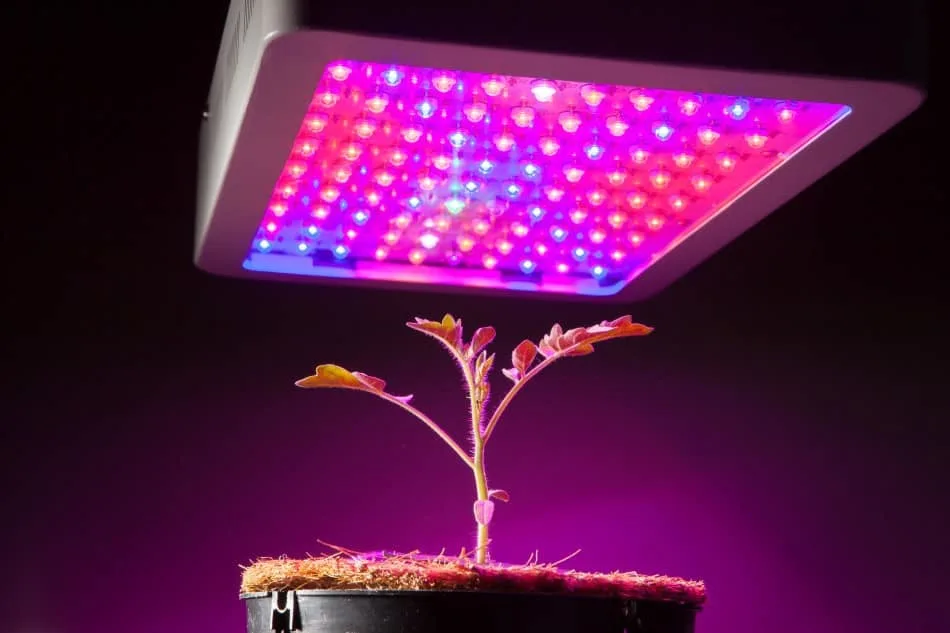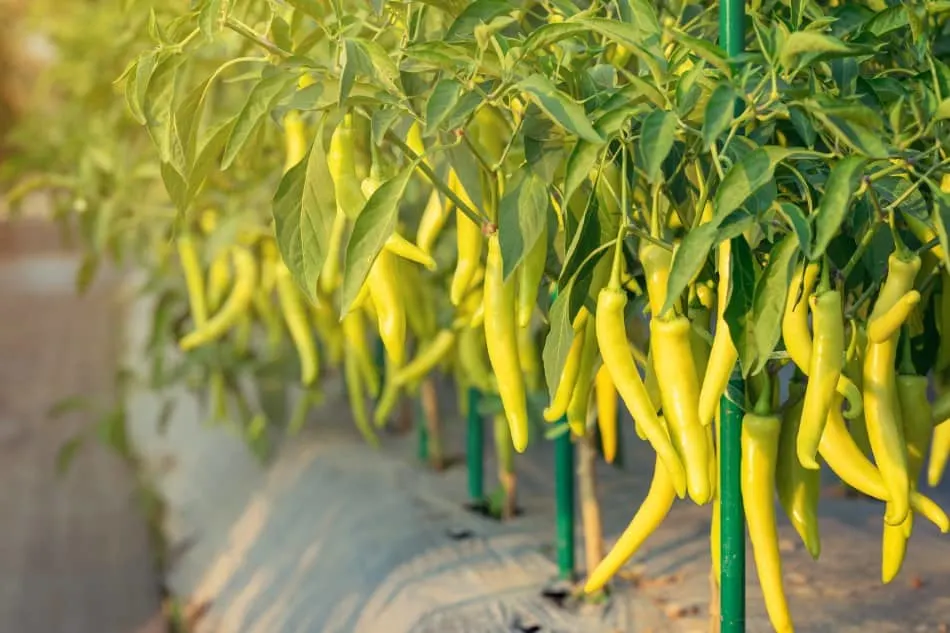Plants require light to grow and thrive, and without it, they wouldn’t be able to create sufficient energy. While plants get up to 90 percent of their light from the sun, humans have found a way of growing these plants using artificial lights. Commonly known as grow lights, they provide the plants with everything they can get from the sun, and a bit more, because they can provide light even at night.
Sunlight produces a full spectrum of light, and in it are the blue and red light used by the plants to grow and create energy. Grow lights are as good as sunlight, with more flexibility. If you don’t have access to direct sunlight, grow lights can be a good alternative, although more costly.
That’s not all, as there are many things to compare between the two before deciding which is the best. Things like the colors of the light and intensity are among the determining factors, which we will discuss in this post.

How Does a Grow Light or LED Compare to Sunlight?
Grow lights or LEDs have been designed to mimic sunlight by emitting full-spectrum lights that help the plant during photosynthesis. While the sun is freely available, its movement and shifting position throughout the day, week, and year poses some challenges to the plants. There are times when it’s too hot or too cold to grow any plants.
Grow lights or LEDs, on the other hand, offer constant light for extended periods. You can customize the artificial grow lights to produce the specific light needed by the plants, putting total control over the growth of the plants in your hands. To understand how the two lights compare, let’s divide their abilities into the following categories:
Type of Light
Sunlight produces a full spectrum of light divided into three categories: ultraviolet light, visible light, and infrared light. Some grow lights contain a full spectrum to mimic sunlight, but some LEDs use the red/blue spectrum, which emits pink or purple colors. All these sources of light are effective in the growth and health of the plants.
Strength of Light
If you compare grow lights and sunlight in terms of light intensity, the sun will win hands down. However, grow lights are better than filtered sunlight that goes through the window. Due to the sun’s high light intensity, plants can accomplish more in half the time under direct sunlight than under grow lights.
Color of Light
Even though sunlight produces a full spectrum of lights, plants only require two colors: red light for budding and blue light for foliage growth. The other colors produced by the sun are not helpful to the plants. A full spectrum grow light can equal the light from the sun, but with some benefits. The ability to customize the type of light you want produced is one of them. With this option, you can choose specific lights for the plants while filtering out useless colors.
Can Grow Lights or LEDs Replace Sunlight For Plants?
Modern grow lights produce a complete spectrum of light that plants crave. Even though the sun is still an undisputed source of light, its seasonal movements throughout the year make it unreliable in some parts of the world. For this reason, many people have turned to grow lights to grow their plants indoors, especially during winter when sunlight can be scarce.
Grow lights or LEDs are capable of replacing sunlight for plants due to the following reasons:
- They offer constant lighting, which maximizes photosynthesis and growth.
- They can be controlled to allow you to provide the best light spectrum to match the types of plant you’re growing and their growth stage.
- They give you the power to determine the light intensity by moving the bulbs closer or further away from the plants.
Grow lights are perfect for seedlings, herbs, and many houseplants. A majority of modern grow lights have an additional spike of blue light that is crucial to enhance photosynthesis, which leads to solid roots and peak growth of seedlings.
The results experienced in seed starting are impressive under grow lights when compared to sunlight, as you’ll get stocky, healthy, and green seedlings compared to those grown outside. Orchids, Begonias, and African violets are among the plants that thrive under grow lights.
The fact that you can control when and how long the lights stay on is another reason why you should consider using grow lights over sunlight.

How Many Hours Under Grow Lights Or LEDs Do Plants Need Compared To Sunlight?
Every plant requires resting time, no matter which species you’re growing. Respiration is an essential task every plant undergoes during a growing process, and it happens when it’s dark. Striking a balance between the growth and rest time can affect the growth rate of your plants.
Depending on the type of plant, it’s essential to allow them at least 8 hours of darkness. As a rule of thumb, most flowering plants and vegetables require around 12 to 16 hours of grow lights. The number of hours drops to 12 under direct sunlight. Short-day plants such as Begonias require less than 12 hours of light per day, while long-day plants such as garden flowers require 18 hours of light. Geraniums and African violets are considered day-neutral plants and need only 8 hours of light to thrive.
Most grow lights come equipped with a built-in timer that helps to get the duration right.
Are Grow Lights Better Than Sunlight? Pros and Cons
Both grow lights and sunlight are sufficient light sources for plants to grow. However, each of these light sources has its strengths and weaknesses.
Grow Light Pros
Turn any place into a garden: Grow lights make it possible to grow plants even in the unlikeliest of places, such as your basement, where sunlight is absent. It’s a perfect source of light for people with limited growing space options.
The ability to control the lights: Unlike sunlight, which we have limited control or influence over, grow lights can be controlled and customized to suit the type of plants you’re growing.
Always available: Grow lights are available as needed, with modern lights having a built-in timer to decide how long you want them to stay on.
Grow Light Con
They can be costly: The electric bill can be huge depending on the bulbs you’re using, how long the bulbs stay on, and the size of your indoor garden. There is also the cost of buying the bulbs and replacing them once they run out of life.
Sunlight Pros
Free and available: Sunlight is free and available throughout the day, depending on the season, the weather, and your location.
It produces heat and light: Besides producing light that is important to the plants, sunlight is also a heat source. While some grow lights can provide, they’re not as efficient of a heat source as sunlight.
Sunlight Con
Not reliable during winter: Plants lack enough sunlight during winter when they usually wither and turn brown.
Less flexibility: You can only get sunlight at certain hours of the day, and depending on your location and window options, you might not be able to take advantage of all the qualities that sunlight brings.
Which Grow Lights are Closest to Sunlight?
Full-spectrum grow lights are the closest a grow light can get to sunlight, as they produce similar wavelengths to those of the sun. Examples of grow lights that resemble sunlight include:
- PARFACTWORKS LED Grow lights – PARFACTWORKS LED light is outstanding, producing 380-780 nm full spectrum. The product also comes equipped with dual cooling fans to avoid overheating. Costing less than $100, this LED grow light offers real value for your money.
- VIVOSUN LED Grow lights – VIVOSUN is a famous brand among indoor plant growers due to its high-energy efficiency, producing just 2.75 umol/J. It also consumes 100W of electricity, making it one of the most cost-effective grow lights. It’s also famous for emitting low noise and heat.
Closing Thoughts
Direct sunlight can offer your plant the light and heat it needs to thrive. However, depending on your location, you might not always be able to take full advantage of all the benefits sunlight can provide. In the case of limited availability of sunlight, indoor plants, and seasonal climates, grow lights or LEDs may provide a good alternative to direct sunlight.
Here are Some of my Favorite Gardening Products and Tools
Thank you for reading this article. I hope you found it helpful for growing some new plants in your home or garden. Here are some products I like that I hope you’ll also find helpful. These are affiliate links, and I am compensated for referring traffic. But in all honesty, these are the exact product that I use or recommend to everyone.
Soil: For high-quality soil, I really like Fox Farm Ocean Forest. I do all my growing in containers and this soil has worked great for me. I like how they use nutrient-rich contents like earthworm castings, bat guano, and composted crab and fish.
Fertilizer: Currently I am using a seaweed-based organic fertilizer call Neptunes Harvest. This is a great milder fertilizer option if you want to use something organic. If you want a more powerful fertilizer, I recommend Fox Farm Liquid Nutrient Trio, lots of people have had great growing success with this product.
Pruning Shears: Pruning shears are one of the most useful gardening tools to have because it’s important to prune your plants to keep them healthy. The pruning shears I recommend are the Gonicc 8’’ pruning shears. I like them because they are built sturdy and work both on bigger and smaller plants, so you don’t need to have multiple pruning shears.
spicytrio.com is a participant in the Amazon Services LLC Associates Program, an affiliate advertising program designed to provide a means for sites to earn advertising fees by advertising and linking to Amazon.com. spicytrio.com also participates in affiliate programs with other sites. spicytrio.com is compensated for referring traffic and business to these companies.
